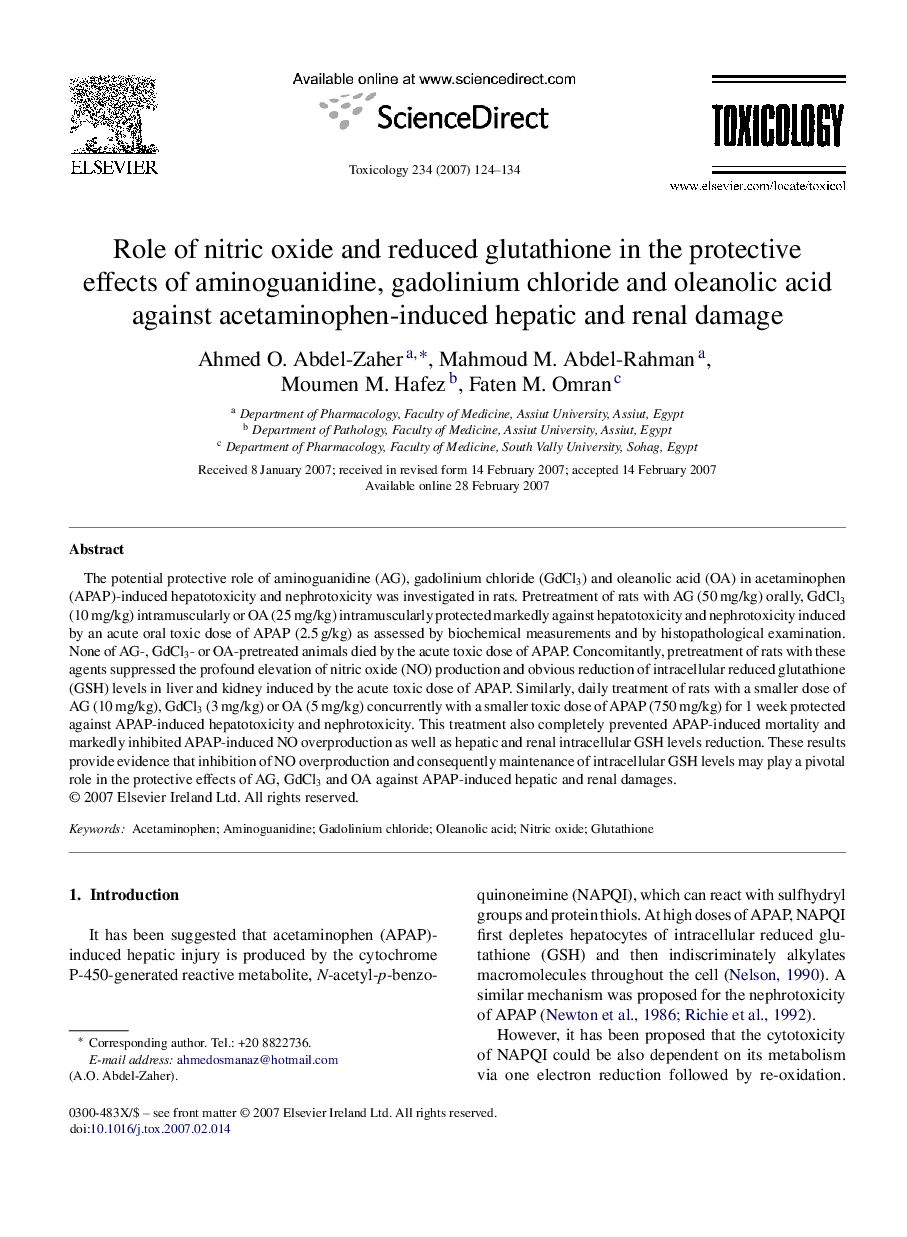| Article ID | Journal | Published Year | Pages | File Type |
|---|---|---|---|---|
| 2597514 | Toxicology | 2007 | 11 Pages |
The potential protective role of aminoguanidine (AG), gadolinium chloride (GdCl3) and oleanolic acid (OA) in acetaminophen (APAP)-induced hepatotoxicity and nephrotoxicity was investigated in rats. Pretreatment of rats with AG (50 mg/kg) orally, GdCl3 (10 mg/kg) intramuscularly or OA (25 mg/kg) intramuscularly protected markedly against hepatotoxicity and nephrotoxicity induced by an acute oral toxic dose of APAP (2.5 g/kg) as assessed by biochemical measurements and by histopathological examination. None of AG-, GdCl3- or OA-pretreated animals died by the acute toxic dose of APAP. Concomitantly, pretreatment of rats with these agents suppressed the profound elevation of nitric oxide (NO) production and obvious reduction of intracellular reduced glutathione (GSH) levels in liver and kidney induced by the acute toxic dose of APAP. Similarly, daily treatment of rats with a smaller dose of AG (10 mg/kg), GdCl3 (3 mg/kg) or OA (5 mg/kg) concurrently with a smaller toxic dose of APAP (750 mg/kg) for 1 week protected against APAP-induced hepatotoxicity and nephrotoxicity. This treatment also completely prevented APAP-induced mortality and markedly inhibited APAP-induced NO overproduction as well as hepatic and renal intracellular GSH levels reduction. These results provide evidence that inhibition of NO overproduction and consequently maintenance of intracellular GSH levels may play a pivotal role in the protective effects of AG, GdCl3 and OA against APAP-induced hepatic and renal damages.
